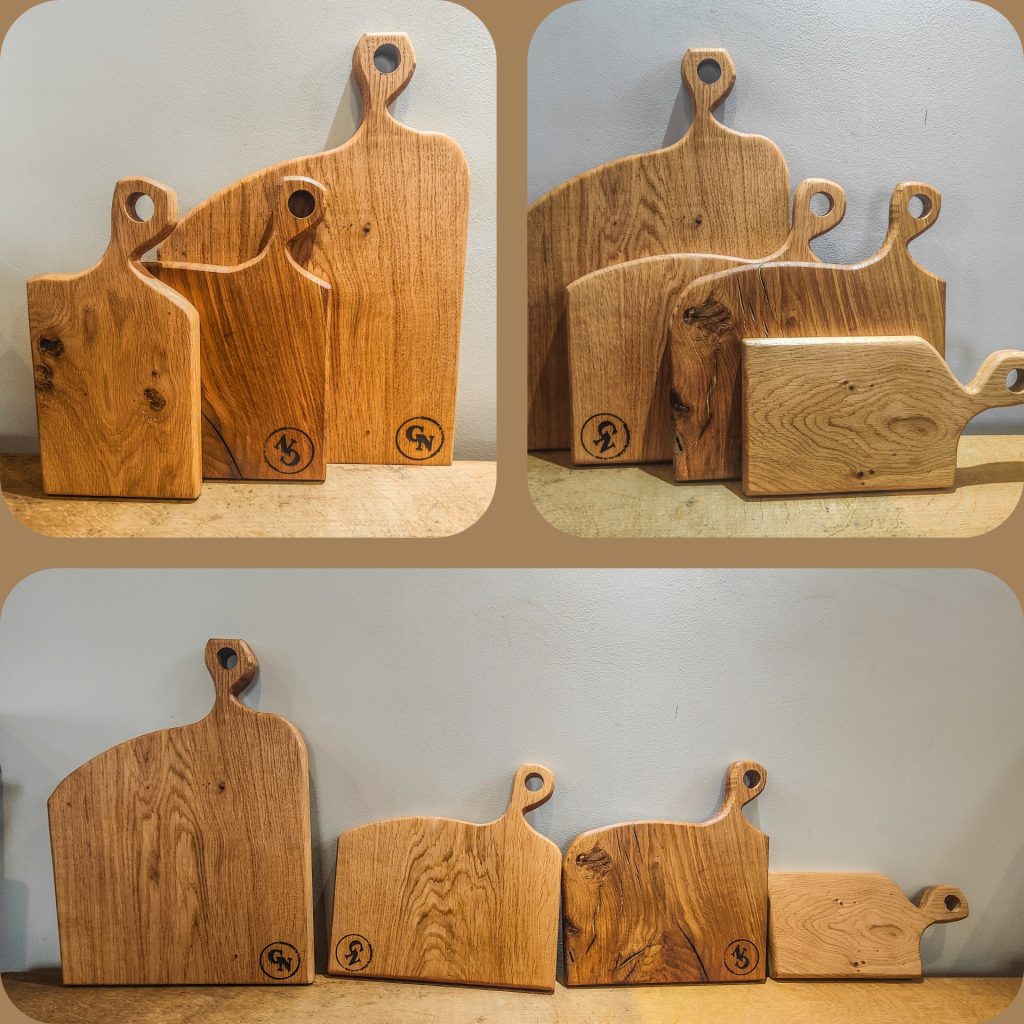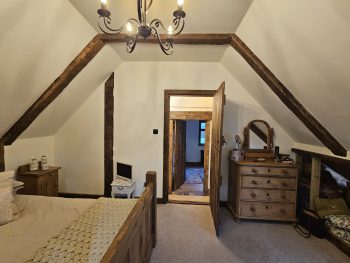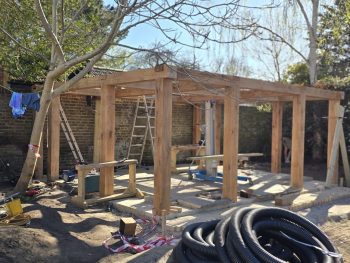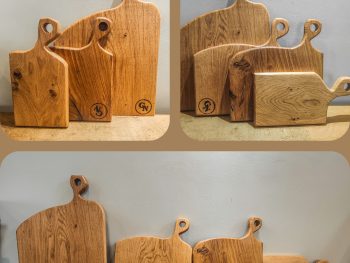After completing a project for a customer, we were left with some rather lovely pieces of high-quality joinery oak. Rather than letting these beautiful offcuts go to waste, we decided to try our hand at crafting a prototype breadboard. We wanted to see if we could make use of the smaller sections of leftover timber and, in doing so, create a product that is both practical and sustainable.
Now, we’ve begun creating a range of uniquely shaped breadboards and chopping boards that not only showcase the natural beauty and durability of oak but also help us become more sustainable by using up leftover materials. Here’s a step-by-step look at how these elegant kitchen essentials are crafted:
Selection of Oak
The boards are made from high-quality, seasoned joinery oak, which is dry, free from defects, and features a pleasing grain pattern. Using up leftover timber means we’re reducing waste while still maintaining the quality and craftsmanship that our products are known for.
Cutting and Shaping
Breadboards and chopping boards can vary in size, and this step allows for plenty of customization and creativity. The edges are shaped using a jigsaw, and the surfaces of the oak are smoothed with a planer and sander. This process removes any rough patches and enhances the natural grain of the wood. Additional details, such as handles, are added to improve both the functionality and aesthetics of the boards.
Finishing
A food-safe finish, such as mineral oil or beeswax, is applied to protect the wood and bring out its natural colour. This step also highlights the unique grain patterns in the oak, adding depth and character to the boards.
By crafting these boards from leftover materials, we’re reducing waste while creating something both beautiful and functional. The result is a stunning, handcrafted breadboard or chopping board that not only serves a practical purpose but also adds a touch of elegance to any kitchen. Crafted with care, these oak boards are built to last and will be cherished for years to come. If you have an oak project idea, please don't hesitate to contact us and let us know your idea!




